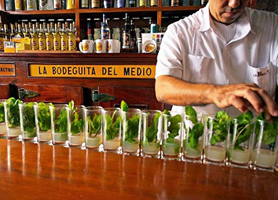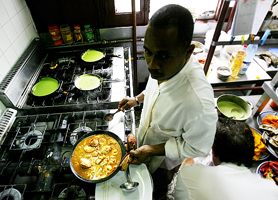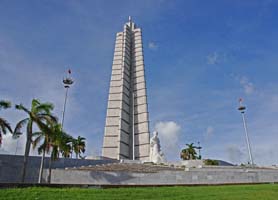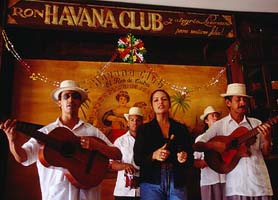Visit a Paladar
Though now a flourishing self employment sector, Cubans started welcoming paying diners into their homes to enjoy home-cooked food in the mid 1990s. There’s really no other way to enjoy a meal than by visiting a Paladar, government owned restaurants simply don’t come close to the ambience. Some paladars are shown at HavanaReviews.com
Visit Havana’s Beach District
Havana’s beaches known as Playas del Este Havana are frequently overlooked by tourists, but offer more in the way of Cuban Culture than the resorts elsewhere in the country which feel devoid of life compared to Playas del Este. Just 20 minutes by car from Old Havana, the beaches are really a single, eight-kilometer (5.2 miles) stretch with the names: Tarará, El Mégano, Santa María del Mar, Boca Ciega and Guanabo. Each with their own differing scenic beauty and unique feel, they offer a great insight into how Cubans live and above all, what they do at the beach!
Visit Revolution Square
Towering above the city on Catalanes Hill, the Plaza de la Revolución is Cuba’s political nerve center. Considering its political importance it is a key location for May Day marches and other national festivities and a “must stop” on any travel itinerary. The overwhelming Memorial y Museo a José Martí is the centerpiece of the whole square. Attracting as much attention as Marti’s memorial is the bronze silhouette of Ernesto ‘Che’ Guevara, created by the Cuban sculptor Rafael Avila and is now pinned to the Ministry of Interior edifice in the Plaza de la Revolución.
Cuban Santaria & Religion
Santería is the most widely practiced religion in Cuba is, known also as the regla de Ochoa or Yoruba religion after the orishas or gods originating from western Nigeria. During the ceremonies in honor of the orishas, each one is invoked by using his or her distinctive drum rhythm and spiritual dance. The previously initiated participants may seem to become possessed and assume certain aspects of the orisha’s personality. How far you wish to look into into such rituals is entirely at your judgment. The yearly festivals of the most popular orishas draw huge crowds. For instance, on 16 December, eve of the feast of San Lázaro or Babalú Ayé, hundreds of thousands of pilgrims make their way to the sanctuary at El Rincón to the south of Havana. The most devout Santaristas drag themselves along on their knees and hands, often with large stones tied to their extremities… Another excellent place to learn more about this religion is the first museum in the world dedicated to orshas of the Yoruba panrheon called the Museo de los Orishas (Paseo de Martí (Prado) #615, entre Máximo Gómez (Monte) y Dragones streets.
Havana Music & Salsa
Get some Authentic Cuban rumba in your veins! This raw music format in song and dance, driven by pulsating African rhythms, mixed with Hispanic influences. Rumba is sometimes an impromptu occurrence. Nevertheless, as a tourist, your best bet is to find the popular rumba spots around town, where the event is more formal but does still attract as many Cubans as tourists. The most atmospheric is the brightly painted alley, Callejón de Hammel on the Hospital y Armamburu streets of Old Havana, where several rumba groups play on weekends; the best known is Clave y Guagancó, which also performs at the UNEAC on Calle 17, sequin. Sábado de La Rumba at Centro Cultural El Gran Palenque Calle 4, entre 5ta y Calzada, 833 9075 is another great music venue, and less touristy than the Hammel event.
Havana Art Muesums
The Museo Nacional de Bellas Artes opened in its current location in 1954. The Museum of Fine Arts was reopened in 2001 to undisputed praise, following a five-year closure. The art collection with nearly 50,000 works is divided into two separate buildings: the Cuban art collection, and the international collection, this latter collection is broad brush coverage of world art but the main attraction is the building itself.











